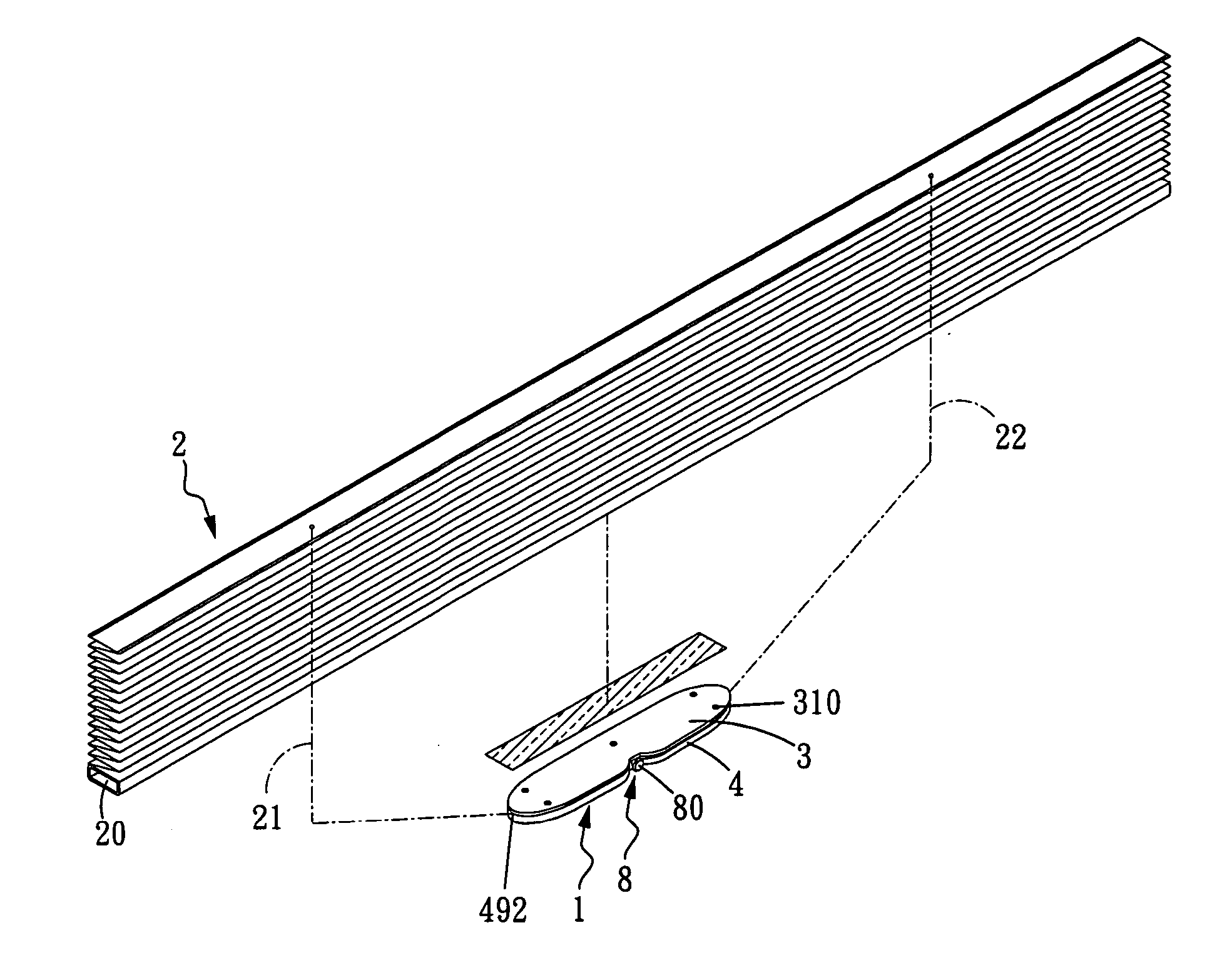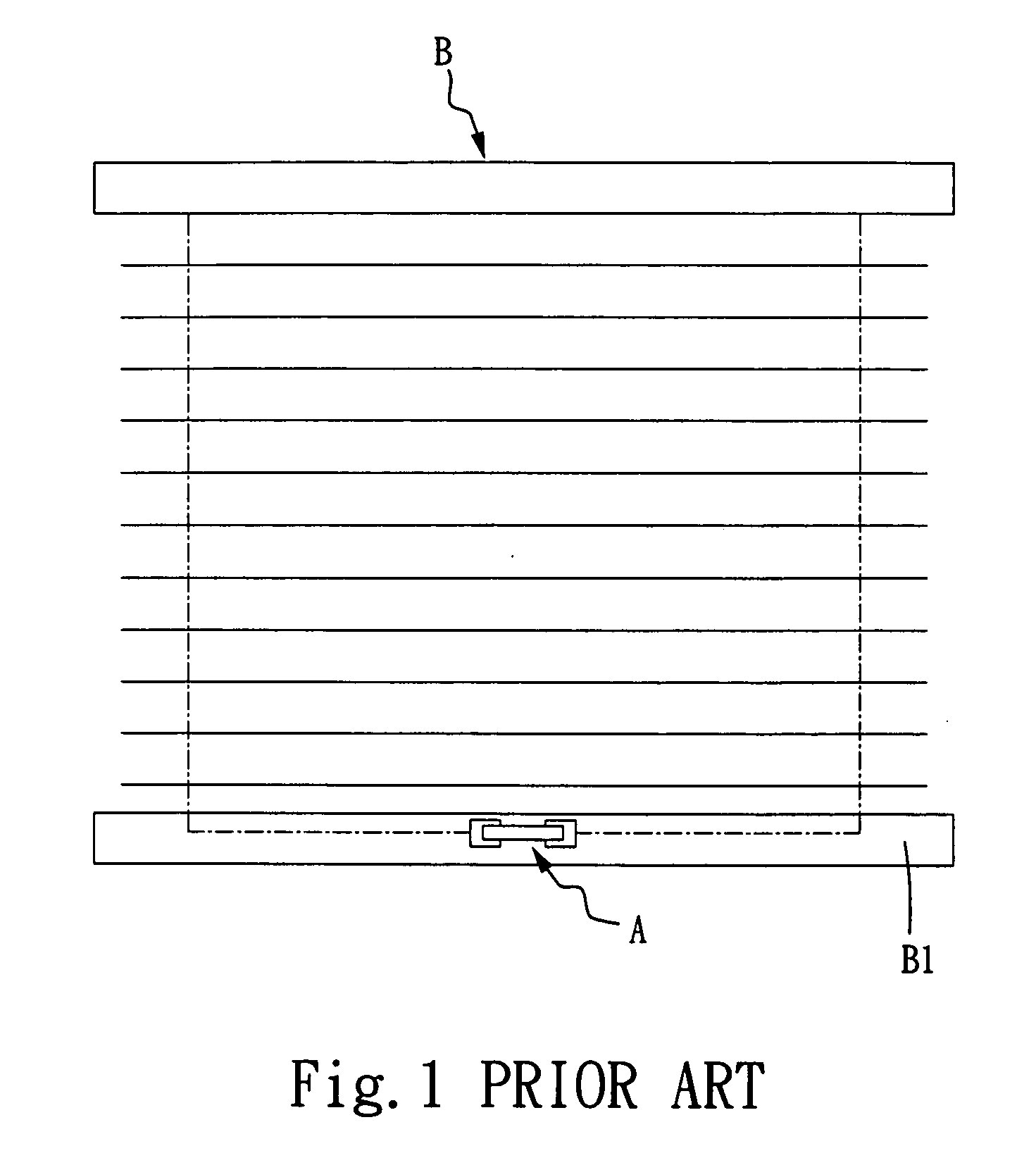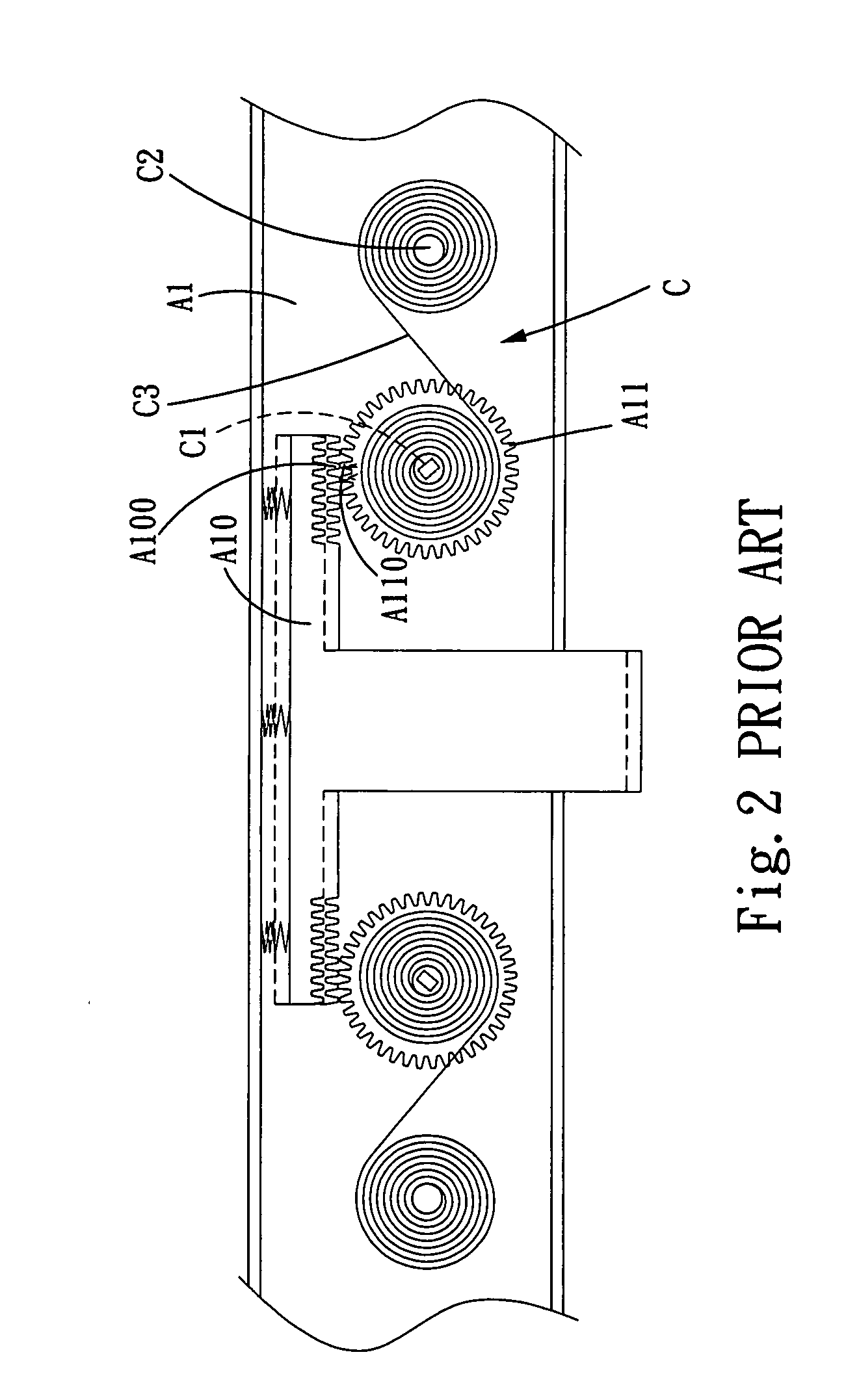Pulling cord winder for venetian blind
- Summary
- Abstract
- Description
- Claims
- Application Information
AI Technical Summary
Benefits of technology
Problems solved by technology
Method used
Image
Examples
Embodiment Construction
[0022] To make it easier for our examiner to understand the objective of the invention, its structure, innovative features, and performance, we use a preferred embodiment and the attached drawings for the detailed description of the invention.
[0023] The basic assembly of a pulling cord winder for a venetian blind in accordance with the present invention is shown in FIGS. 5 and 6. The pulling cord winder 1 is installed directly at the bottom of a lower rail 20 of a venetian blind 2, and a pulling cord 21, 22 is disposed separately on both sides of the pulling cord winder 1. The pulling cord winder 1 comprises: an upper base 3 and a lower base 4 engaged with each other, a fixed cam 41; two bracket coil wheels 5 mounted onto a fixed cam 41, 42 corresponding to a chamber 40 at the center of the lower base 4, and a bracket 6 being disposed at the bracket coil wheel 5 and hooked by both embedding ends 60,61 therein; a brake member 7 clamped between the two bracket coil wheels 5 and hooke...
PUM
 Login to View More
Login to View More Abstract
Description
Claims
Application Information
 Login to View More
Login to View More - R&D
- Intellectual Property
- Life Sciences
- Materials
- Tech Scout
- Unparalleled Data Quality
- Higher Quality Content
- 60% Fewer Hallucinations
Browse by: Latest US Patents, China's latest patents, Technical Efficacy Thesaurus, Application Domain, Technology Topic, Popular Technical Reports.
© 2025 PatSnap. All rights reserved.Legal|Privacy policy|Modern Slavery Act Transparency Statement|Sitemap|About US| Contact US: help@patsnap.com



